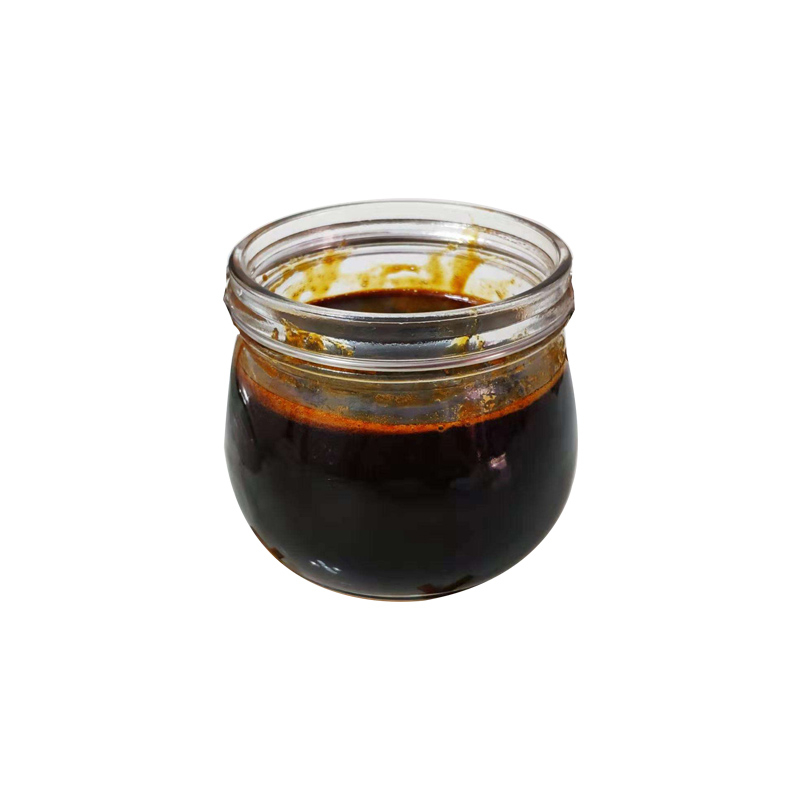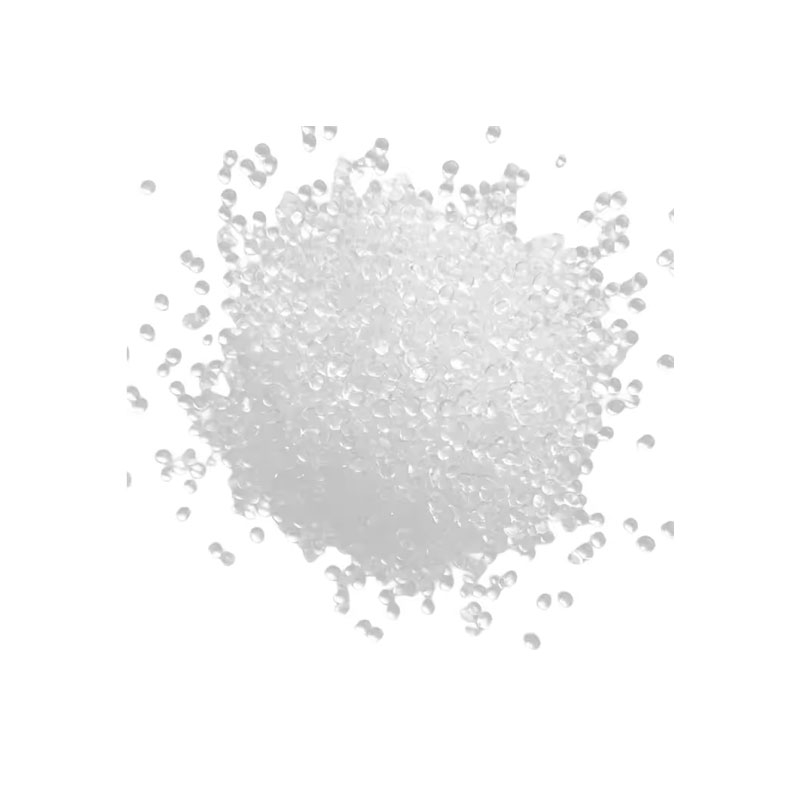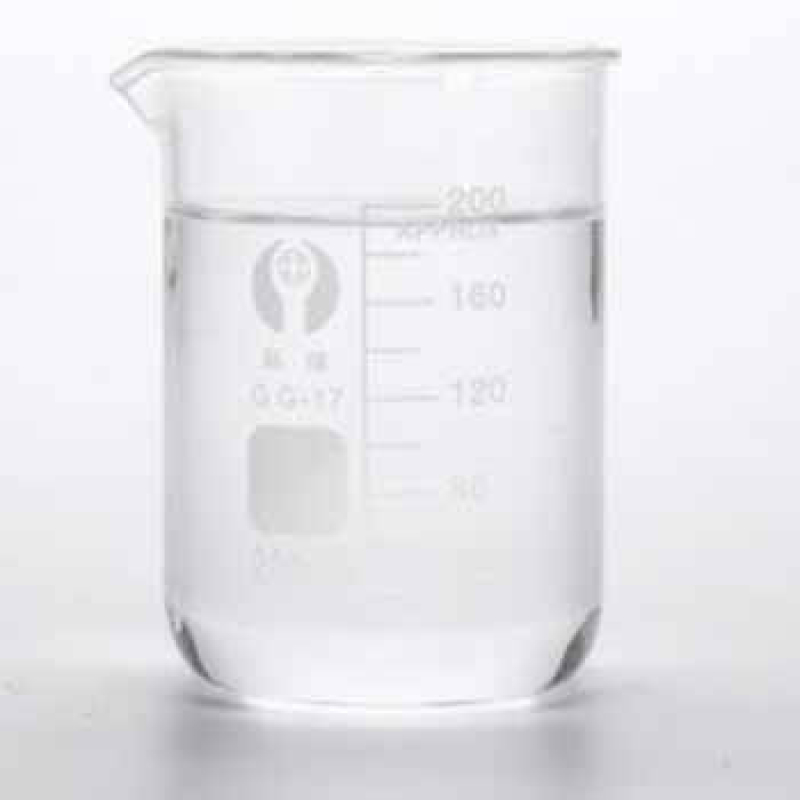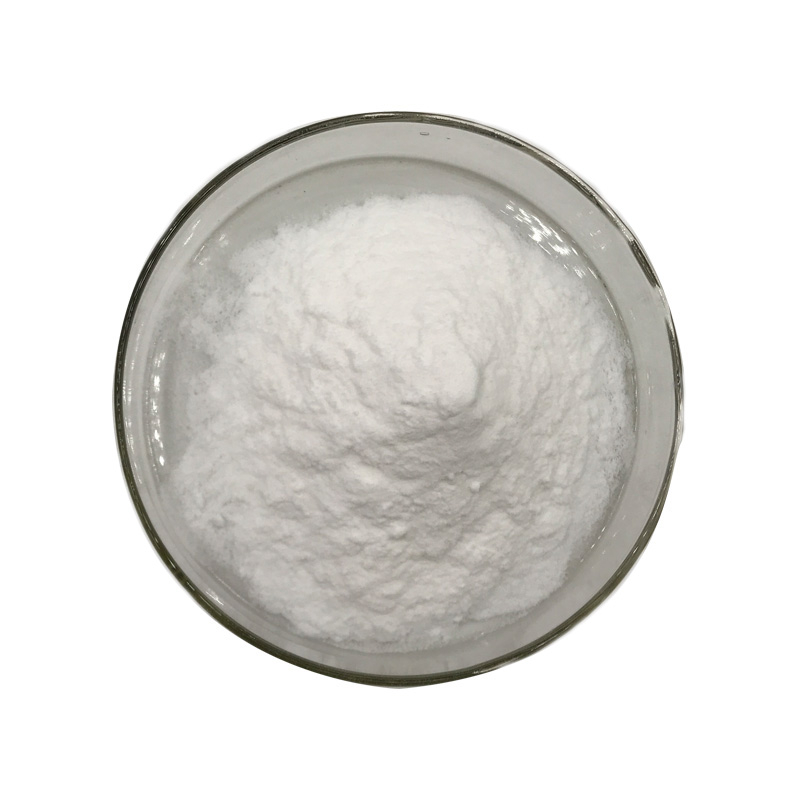Products Description of 2,3-Difluorophenol CAS#6418-38-82,3-Difluorophenol is a chemical substance.2,3-Difluorophenol Chemical PropertiesMelting point 39-42 °C (lit.)Boiling point 54 °C/25 mmHg (lit.)density 1.2483 (estimate)Fp 134 °Fstorage temp. Inert atmosphere,2-8°Cpka7.71±0.10(Predicted)form powder to lump to clear liquidcolor White or Colorless to Almost white or Almost colorlessBRN 2082265InChIKeyRPEPGIOVXBBUMJ-UHFFFAOYSA-NCAS DataBase Reference6418-38-8(CAS DataBase Reference)Safety InformationHazard Codes F,Xn,Xi,CRisk Statements&
Contact Now
Products Description of 2-Amino-3-Pyridinecarboxaldehyde CAS#7521-41-72-Amino-3-pyridinecarboxaldehyde is a pyridine derivative with significant alkalinity, commonly used in organic synthesis and pharmaceutical chemical intermediates. It can synthesize organic compounds with pyridine skeletons through various chemical reactions such as condensation reaction, cyclization reaction and substitution reaction. It has a wide range of applications in basic chemical research.
Contact Now
Products Description of Dodecyltrimethylammonium chloride CAS#112-00-5This product has two specifications. When the effective content is 32% to 35%, the appearance is light yellow liquid. Solidification point -15℃. Relative density 0.981g/cm3. HLB value 17.1. Flash point (open cup) 60℃. When the effective content is 49% to 52%, the appearance is thick liquid. Solidification point -12~-9℃. Density 0.892g/cm3. HLB value 17.1. Flash point (open cup) <27℃. Surface tension (10% aqueous solution) 33×10-3N/cm. Both are miscible with water. Stable chemical properties.
Contact Now
Products Description of Dodecyltrimethylammonium chloride CAS#112-00-5This product has two specifications. When the effective content is 32% to 35%, the appearance is light yellow liquid. Solidification point -15℃. Relative density 0.981g/cm3. HLB value 17.1. Flash point (open cup) 60℃. When the effective content is 49% to 52%, the appearance is thick liquid. Solidification point -12~-9℃. Density 0.892g/cm3. HLB value 17.1. Flash point (open cup) <27℃. Surface tension (10% aqueous solution) 33×10-3N/cm. Both are miscible with water. Stable chemical properties.
Contact Now
Products Description of ICHTHOSULFONATE CAS#8029-68-3Ichthyol is a disinfectant and antiseptic drug. It is mainly used for furunculosis in clinical practice. It can also be used for phlebitis and combined with antibiotic ointment to treat early blepharitis. Ichthyol ointment has an anti-inflammatory effect, so it can be applied externally to treat folliculitis.
Contact Now
Product Description:We are proud to present our top-grade Dimethylacetamide (DMAC), scientifically known as N,N-dimethylacetamide or N,N-dimethyl acetamide, with the CAS No. 127-19-5.
Contact Now
Cyclohexanol CAS#108-93-0Cyclohexanol is a clear, colorless to light yellow, viscous, hygroscopic liquid with a camphor-like odor. A detection smell threshold awareness of sixty four μg/m3 (155 ppbv) was once said through Punter (1983). It has a pretty excessive flash factor and boiling range. A solvent for cellulose ethers, ester gum,shellac, low viscosity silicones and polyvinyl chloride. lt has a pretty confined use in display screen inks.
Contact Now
Products Description of Natamycin CAS#7681-93-8Natamycin, also known as pimaricin and natamycin, was first isolated from Streptomyces natalensis in 1955. Its activity is far superior to sorbic acid. In June 1982, the US FDA officially approved natamycin for use as a food preservative and classified it as a GRAS product. Natamycin is a highly effective inhibitor of molds, yeasts and fungi. It is used to inhibit molds, yeasts and fungi in food. It is very safe and reliable for the human body and does not affect the flavor of the product.
Contact Now
Products Description of Methyl 3-amino-2-pyrazinecarboxylate CAS#16298-03-6The molar refractive index of methyl 3-aminopyrazine-2-carboxylate is 38.44, the molar volume (m3/mol) is 116.0, the isotonic volume (0.2K) is 326.2, the surface tension (dyne/cm) is 62.4, and the polarizability (10-24cm3) is 15.24.Methyl 3-amino-2-pyrazinecarboxylate Chemical PropertiesMelting point 169-172 °C (lit.)Boiling point 300.8±37.0 °C(Predicted)density 1.319±0.06 g/cm3(Predicted)storage temp. Keep in dark place,Sealed in dry,2-8°Csolubility Chloroform, Methanolform Crystallin
Contact Now
Products Description of Phenol CAS#108-95-2Phenol, with the chemical formula 𝐶6𝐻5𝑂𝐻C6H6O, is a white crystalline substance known for its versatility and reactivity due to the hydroxyl group attached to the benzene ring. It serves as a key precursor in the synthesis of pharmaceuticals, including aspirin, and is integral to the production of resins, plastics, and synthetic fibers like nylon. Phenol's historical use as a disinfectant highlights its ability to denature proteins and disrupt cell membranes. It also plays a role in the detergent industry and analytical chemistry.
Contact Now
Products Description of Bromobenzene CAS#108-86-1Bromobenzene is an organic compound with the chemical formula C6H5Br. It is a colorless oily liquid with the smell of benzene. Insoluble in water, soluble in most organic solvents such as methanol, ether, acetone, etc.
Contact Now
Phenol CAS# 108-95-2 Phenol is the easiest member of a classification of natural compounds possessing a hydroxyl team connected to a benzene ring or to a extra complicated fragrant ring system.Also recognized as carbolic acid or monohydroxybenzene, phenol is a colorless to white crystalline fabric of candy odor, having the composition C6H5OH, bought from the distillation of coal tar and as a derivative of coke ovens.Phenol has extensive biocidal properties, an
Contact Now
6-CHLORO-9-(TETRAHYDRO-2-PYRANYL)-PURINE Chemical PropertiesMelting point 149-151℃Boiling point 428.3±55.0 °C(Predicted)density 1.604Fp 213°(415°F)refractive index 1.7410storage temp. Inert atmosphere,Store in freezer, under -20°Cpka0.79±0.10(Predicted)form Solidcolor White to pale yellowCAS DataBase Reference7306-68-5(CAS DataBase Reference)Safety InformationHS Code 2933998090Factory and Equipment ShowFast delivery timeInventory 2-3 working days New production 7-10 working days
Contact Now
Products Description of Sodium Hydroxymethanesulphinate CAS#149-44-0Sodium bisulfite formaldehyde is translucent white orthorhombic crystals or small pieces. Apparent density 1.80~1.85g/cm3. Easily soluble in water, slightly soluble in alcohol. It has extremely strong reducing properties under high temperature and can make the dyed color disappear, so it is known as the chemical book of hanging white blocks. It decomposes when exposed to acid, and decomposes at 120°C to produce toxic gases such as formaldehyde and hydrogen sulfide.
Contact Now
Products Description of Triethylamine CAS#121-44-8 Triethylamine (molecular formula: C6H15N), also known as N,N-diethylethylamine, is the simplest homotrisubstituted tertiary amine. It has the typical properties of tertiary amines, including salt formation and oxidation. Triethylamine has no reaction in the Hisberg reaction. It is a colorless to light yellow transparent liquid with a strong ammonia odor and a slight smoke in the air. Boiling point: 89.5℃, relative density (water = 1): 0.70, relative density (air = 1): 3.48, slightly soluble in water, soluble in ethanol and ether.
Contact Now
Products Description of 6,7-Dimethoxyquinazoline-2,4-dione CAS#28888-44-06,7-Dimethoxy-2,4-quinazolinedione (doxazosin EP impurity D) is a chemical crystalline compound with a melting point of >300°C, an intermediate of prazosin hydrochloride.6,7-Dimethoxyquinazoline-2,4-dione Chemical PropertiesMelting point >300 °C (lit.)Boiling point 363.37°C (rough estimate)density 1.3404 (rough estimate)refractive index 1.6300 (estimate)storage temp. 2-8°Csolubility Aqueous Acid (Sparingly)pka10.27±0.20(Predicted)color White to Off-WhiteWater Solubility i
Contact Now
Products Description of 4-Aminoisoquinoline CAS#23687-25-44-Aminoisoquinoline is a white powdery crystal.CAS No.
Contact Now
Products Description of 4'-Methylpropiophenone CAS#5337-93-9The molecule of p-methylpropiophenone contains a polar carbonyl (C=O) bond and a non-polar benzene ring. The whole molecule is relatively polar, but also has a certain non-polarity. Therefore, it can be dissolved in non-polar solvents such as petroleum ether and benzene, as well as polar solvents such as ethanol and dimethylformamide. The molecule of p-methylpropiophenone contains a long alkyl chain and a benzene ring, and there are certain van der Waals forces and hydrogen bonding forces between molecules.
Contact Now
Products Description of Palmitoyl chloride CAS#112-67-4Colorless liquid. Melting point 11-12℃, boiling point 12℃, boiling point 199℃ (2.6kPa), 194.5℃ (2.27kPa). Refractive index 1.4512. Miscible with organic solvents, soluble in ether.
Contact Now
Products Description of Dioctyl sebacate CAS#122-62-3Dioctyl sebacate, also known as bis-2-ethylhexyl sebacate, referred to as DOS, is made by esterification of sebacic acid and 2-ethylhexanol. It is suitable for polyvinyl chloride, vinyl chloride copolymers, nitrocellulose, ethyl cellulose and synthetic rubber. It has high plasticizing efficiency and low volatility. It has excellent cold resistance, good heat resistance, light resistance and electrical insulation. It also has good lubricity when heated, making the product look good and feel good.
Contact Now
Products Description of AMIX 1000 CAS#68910-05-4White powderAMIX 1000 Chemical PropertieBoiling point 199.7℃ at 101.325kPadensity 1.032 at 20℃vapor pressure 6.1-27.7hPa at 20-50℃form ViscousEPA Substance Registry SystemEthanol, 2-amino-, reaction products with ammonia, by-products from (68910-05-4)Factory and Equipment ShowFast delivery timeInventory 2-3 working days New production 7-10 working days
Contact Now
Dodecyltrimethylammonium Bromide Chemical PropertiesMelting point 246 °C (dec.)(lit.)density 1.1566 (rough estimate)vapor pressure 0Pa at 20℃refractive index 1.5260 (estimate)Fp 246°Cstorage temp. Store below +30°C.solubility H2O: 0.1 M at 20 °C, clear, colorlessform Powdercolor White to slightly yellowWater Solubility solubleSensitive Hygroscopicλmaxλ: 240 nm Amax: ≤0.2λ: 250 nm Amax: ≤0.03λ: 260 nm Amax: ≤0.02λ: 500 nm Amax: ≤0.02BRN 3597463InChIKeyXJWSAJYUBXQQDR-UHFFFAOYSA-MCAS DataBase Reference1119-94-4(
Contact Now
Products Description of Sulfonic acids, petroleum, sodium salts CAS#68608-26-4White powderSulfonic acids, petroleum, sodium salts Chemical PropertiesBoiling point 1042.61℃[at 101 325 Pa]vapor pressure 0Pa at 25℃Water Solubility 0.065ng/L at 25℃LogP22.12 at 25℃EPA Substance Registry SystemPetroleum sulfonic acids, sodium salts (68608-26-4)Factory and Equipment ShowFast delivery timeInventory 2-3 working days New production 7-10 working days
Contact Now
Products Description of Bilirubin CAS#635-65-4This product is mainly derived from the reduction product of heme in hemoglobin through a series of catabolism after the disintegration of aging red blood cells. It is golden yellow or dark reddish brown monoclinic crystal, odorless and tasteless. Soluble in organic solvents such as benzene, chloroform and carbon disulfide; also soluble in hot mixture of ethanol and chloroform; sodium salt is easily soluble in water, but calcium salt, magnesium salt and barium salt are insoluble in water.
Contact Now



































